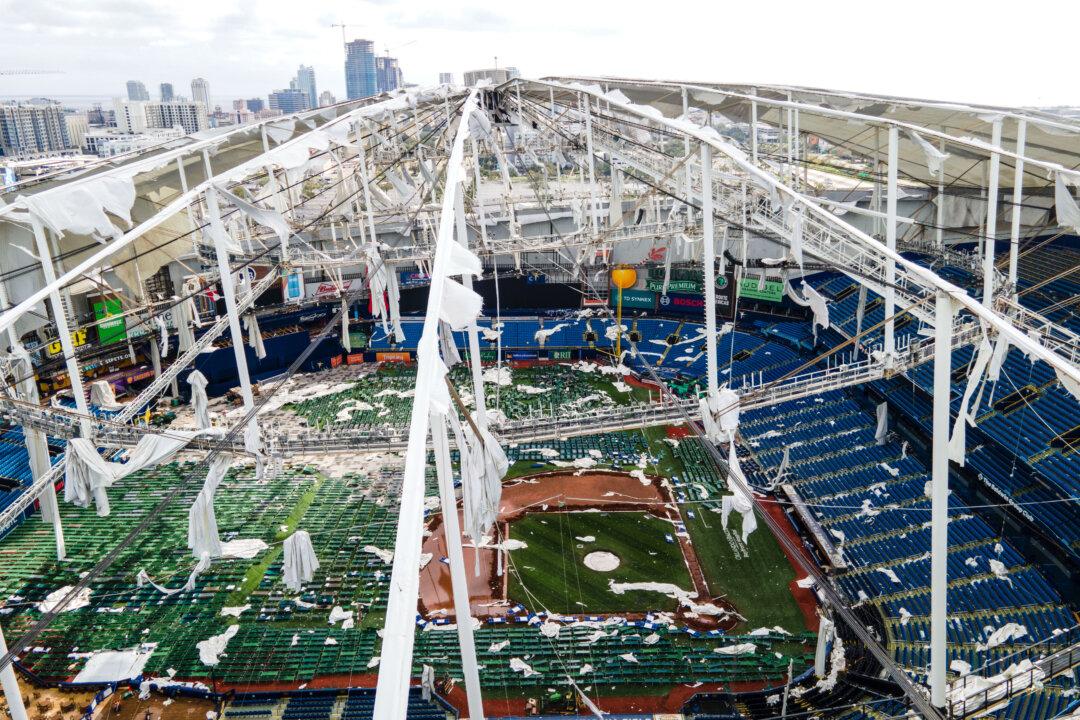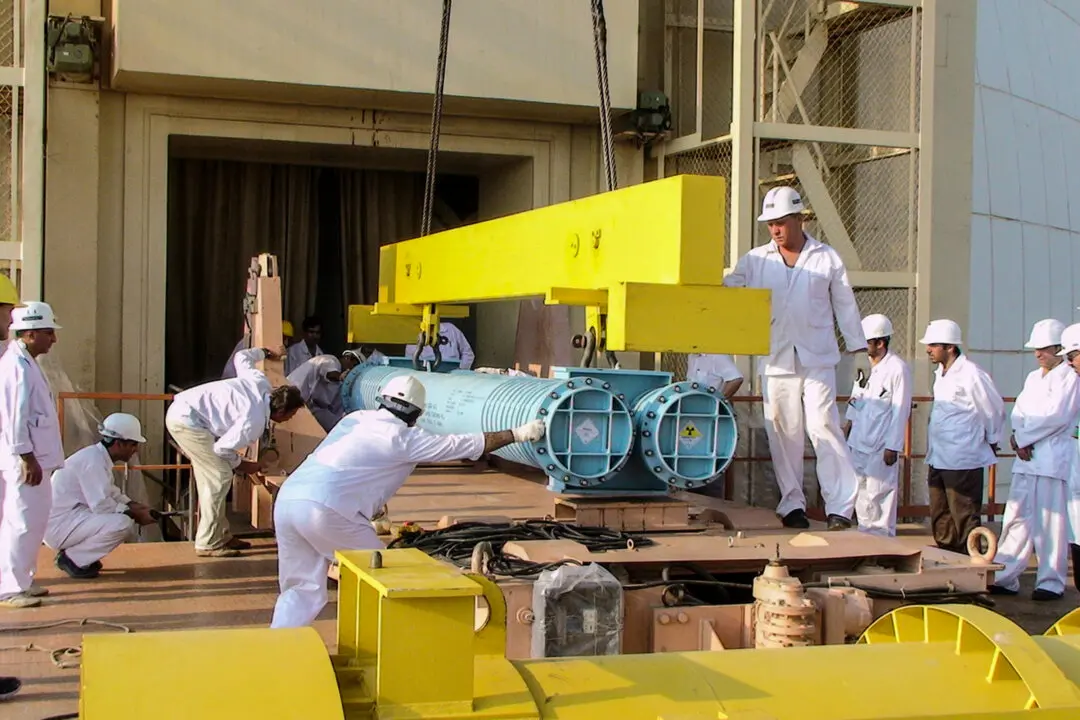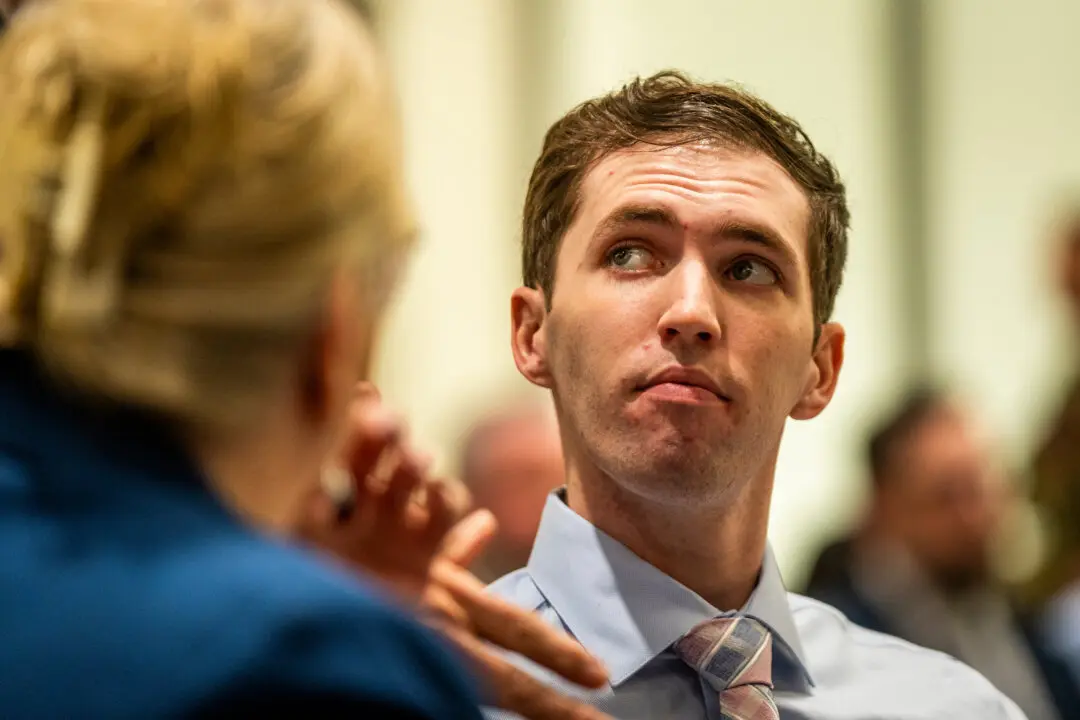Hurricane Milton tore the fabric roof from Tropicana Field, used by the Tampa Bay Rays baseball team, and littered the field below with debris, according to aerial photos and video footage.
The hurricane roared onshore near the Sarasota area on Wednesday night as a Category 3 storm, according to the National Hurricane Center (NHC), bringing winds in excess of 110 mph.





